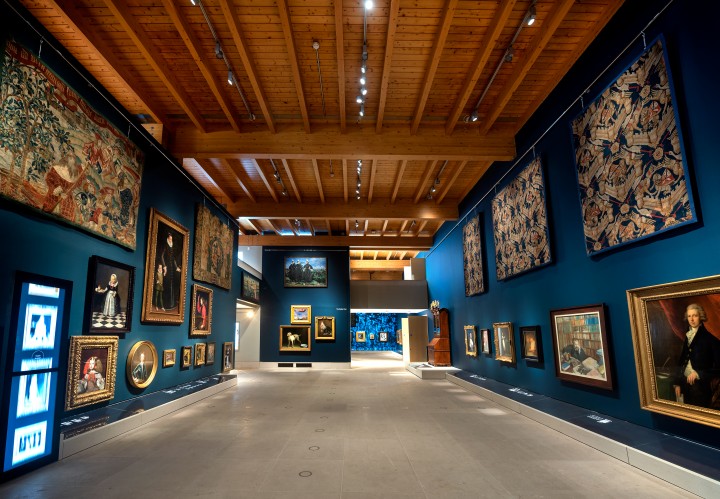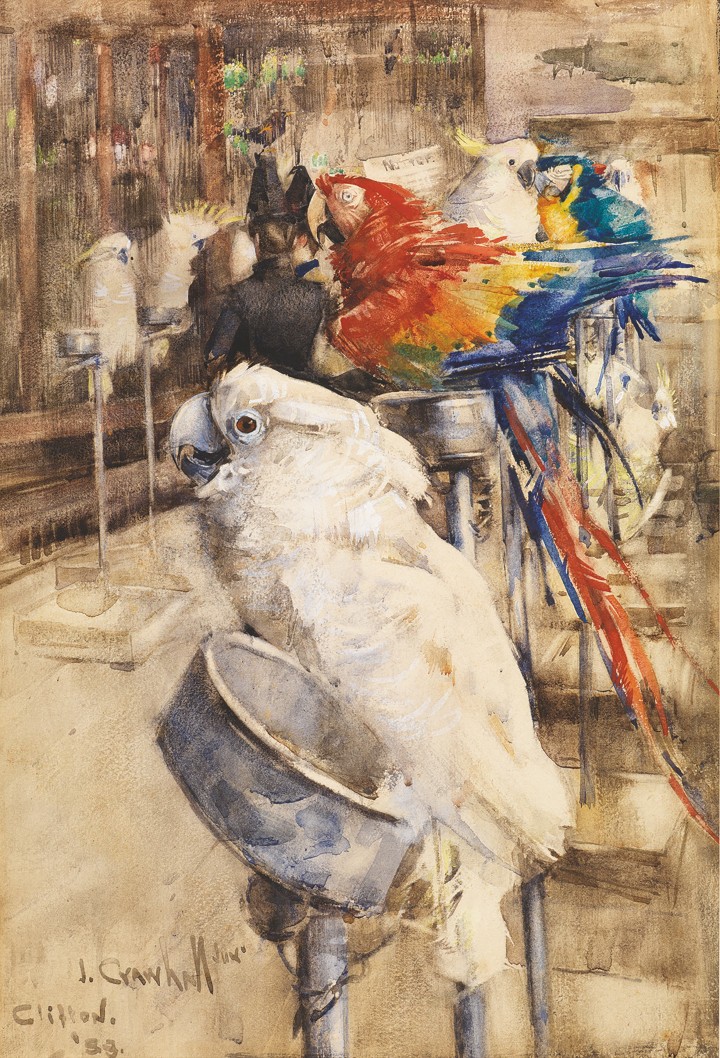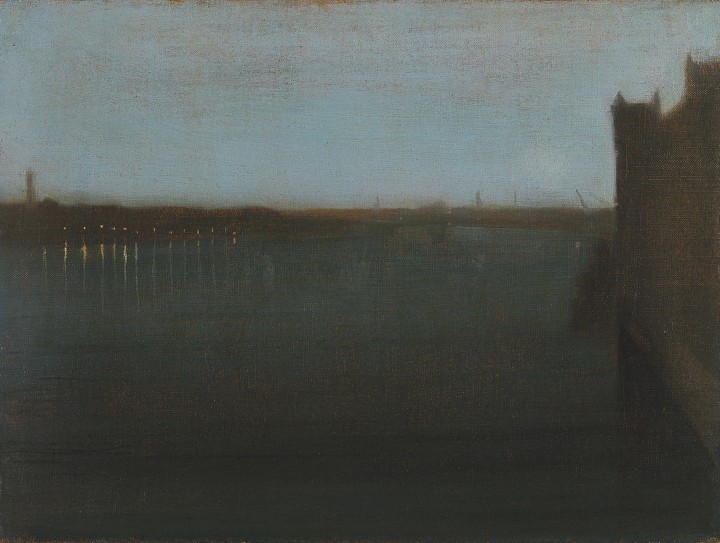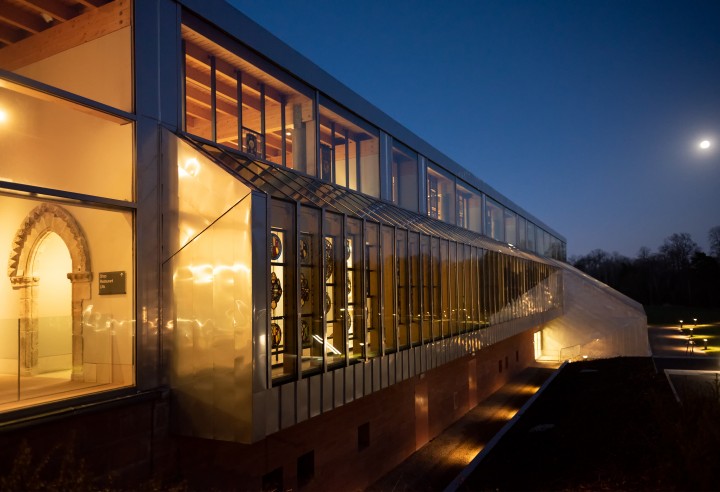Scottish Art News
Latest news
Magazine
News & Press
Publications
William Burrell: a Scottish Art Collector
By Susan Mansfield, 31.03.2022

As the new-look Burrell Collection reopens its doors after a major refurbishment, visitors will once again be able to enjoy the myriad treasures of Glasgow’s most famous art collector. However, as you wander among the Chinese vases and Persian carpets, suits of armour and ancient Egyptian artefacts, it’s important to remember that William Burrell was also a collector of the art of his day, and a supporter of living artists.
As well as purchasing works of art which might have been considered dangerously avant-garde by artists such as Whistler, Rodin and Cezanne, Burrell also supported the Scottish artists of his day, the Glasgow Boys and the Scottish Colourists. As director of Glasgow Museums Duncan Dornan says: “He was a traditional Victorian art collector, but he also collected contemporary art.”
If we were to turn the clock back to an evening in 1894, we would find Burrell sitting down to dine with the Glasgow Boys to celebrate the first solo exhibition by Joseph Crawhall at Alexander Reid’s gallery, Société des Beaux Arts, in St Vincent Street. Burrell later wrote of the occasion with more than a hint of pride: “I was the only non-artist invited — It was a very merry evening.”
Burrell was then in his early thirties, a successful businessman who was beginning to collect art. He already owned at least two works by Crawhall, A White Horse, purchased at the Royal Scottish Society of Painters in Watercolour (RSW) in 1886, and The Aviary, Clifton, which he loaned back to Crawhall’s exhibition. Thanks to a new biography, William Burrell: A Collector’s Life, by Martin Bellamy and Isobel MacDonald, we know that by this point he had also bought works by Guthrie and Lavery, and was beginning to dip his toe into the waters of avant-garde European art.
 Joseph Crawhall, The Aviary, Clifton, 1888. The Burrell Collection
Joseph Crawhall, The Aviary, Clifton, 1888. The Burrell Collection
It is easy to forget that the Impressionists and their contemporaries did not immediately catch the imagination of collectors. Artists such as Whistler and Rodin often struggled to sell their work, though both found a warmer welcome in Glasgow than in many other cities. Following the International Exhibition of 1888 at Kelvingrove Park, at which both were shown, Glasgow Corporation bought works by both artists which in turn inspired the city’s industrialists to take an interest.
Burrell bought a number of works by Whistler in the 1890s, including the important Japoniste painting La Princesse du Pays de la Porcelaine which hung in his Glasgow home until he sold it to American collector Charles Lang Freer in 1903. Jo Meacock, curator of British Art at Glasgow Museums, says: “Whistler was a pretty controversial figure, and had fallen out with most of the art world in London, it was quite a radical step for the Corporation of Glasgow to buy his work. Burrell bought several works in the 1890s, but sold all of them in the 1900s at a profit. The Nocturne in the collection now was bought in the 1930s, perhaps because he regretted selling the others.
In the 1890s, he began to collect both Rodin and Degas, and went on to have significant groups of works by both artists, among the largest in the UK. Early purchases included a Degas pastel from Alexander Reid, which led to the painters Hornel and Henry referring to Burrell in their letters to one another by the moniker “Degas Reid”.
Art historians believe Reid was an important influence on Burrell. He had travelled to Paris in the 1880s, where he had a shared an apartment for a time with Van Gogh and his brother Theo. He was one of the first dealers to bring impressionist and post-impressionist works to the UK, though this was a comparatively small part of his business in the 1890s.
 James Abbott McNeill Whistler, Nocturne: Grey and Gold, Westminster Bridge, c. 1871-2. The Burrell Collection.
James Abbott McNeill Whistler, Nocturne: Grey and Gold, Westminster Bridge, c. 1871-2. The Burrell Collection.
Frances Fowle, Professor of 19th-century Art at Edinburgh University, senior trustee at the Burrell Collection, and author of a book on Reid, Van Gogh’s Twin, says: “These were quite difficult things to sell. Glasgow’s art collectors lived in houses with a lot of wood panelling, they liked Scots baronial style. In some ways, Whistler was easier, and the artists of the Barbizon and Hague Schools [both of which Burrell bought in numbers]. The Impressionists were more difficult. The majority of purchases were one-off, people didn’t build up big collections.
“A lot of collectors of that generation were fairly open-minded, quite adventurous, thanks to Alex Reid. Scotland is recognised in the 1890s as quite important; a number of people buying one or two works which are significant. I never think of Burrell as being exceptionally avant-garde, with some of his most significant pieces being bought after 1920. I do think he was influenced by what was available, and what dealers suggested he might like, but he did have passion for key artists, such as Degas and Rodin.”
 Exterior of The Burrell Collection taken at night South Gallery Image courtesy of © CSG CIC Glasgow Museums Collections
Exterior of The Burrell Collection taken at night South Gallery Image courtesy of © CSG CIC Glasgow Museums Collections
Jo Meacock says: “Burrell wasn’t buying impressionist art directly when it was being made but he was one of the earliest Scottish collectors of Degas, Cezanne, Rodin and Whistler. And he did buy paintings and sculpture with modern ideas. Jacob Epstein’s work is quite sexually suggestive. Rodin’s The Wave, is a very poetic piece with two naked bodies, exploring the idea of the siren. Burrell had the only cast made of that sculpture, so that’s really quite special.”
At the same time as Reid was importing art from France, he was also selling the work of contemporary Scottish artists influenced by French art, the Glasgow Boys and the Scottish Colourists, and it was natural that he should seek to introduce them to his most important clients. Jo Meacock says: “I think Burrell was invited to the dinner (in 1894) very purposefully by Reid, because he wanted to encourage friendship and future commissions. It certainly worked!”
Later the same year, Burrell commissioned John Lavery to paint a full-length portrait of his sister Mary for her 21st birthday, and George Henry would later paint his mother and brother. When Henry and E A Hornel ran out of money on a painting trip to Japan in the 1890s, Burrell helped support them.
Isobel MacDonald, co-author of William Burrell: A Collector’s Life, says: “During the First World War, there was an exhibition at Glasgow School of Art to show examples of historical craftsmanship to young artists. Burrell loaned to this exhibition. He also commissioned George Walton to make a stained-glass window for his house in Devonshire Gardens, on an Arts & Crafts theme, ‘Gather ye rosebuds while ye may’. It shows his growing interest in medieval craft work, as well as his support of local artists.”
[img]
Burrell went on to support Scottish Colourist S J Peploe, buying a number of paintings after 1910 when his work was at its most avant-garde. Jo Meacock says: “Reid was trying to help Peploe out, he was going through a bit of a hard time, he had volunteered for the war and been rejected on health grounds, he was trying to make money and people weren’t reacting well to the radical way his work was going. Reid encouraged Burrell to buy quite a few of his works, which he did.”
And, for the rest of his life, Burrell continued to support Crawhall. The Burrell Collection holds some 150 works, the largest collection of Crawhall works in the world. Jo Meacock says: “His collection of Crawhall was unique. Burrell didn’t usually buy work by a single artist in that way. He would snap up all the art he could when it came on the market, and frustrated a number of other collectors who were trying to buy. Even Reid said he had far too many.”
Today, experts can only guess at what he loved about Crawhall’s. Meacock says: “I don’t think they became friends, though Burrell did become friends with Lavery. Crawhall was quite an antisocial person, there is a story that he got invited to dinner at Burrell’s house and fell asleep - thought clearly Burrell didn’t hold it against him! I think he appreciated Crawhall’s sense of humour, and his animal subjects. When he lived at Hutton Castle, Burrell would have rode and hunted, been a judge at agricultural shows, all this struck a chord.”
The Burrell Collection, in Pollok Park, Glasgow, is open from the public on Tuesday 29th March 2022.




